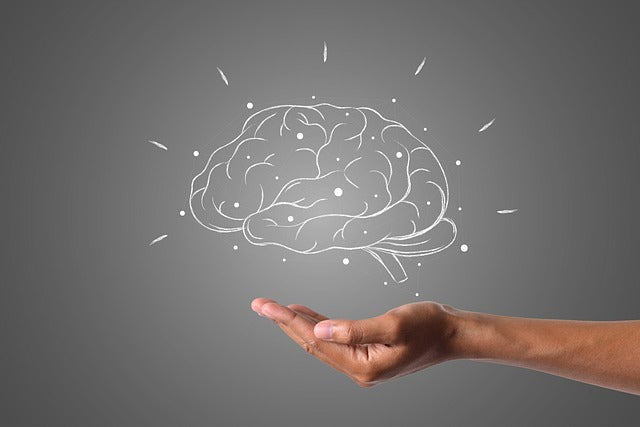Why You Need Both Negatively And Positively Charged Binders
An astonishing 25% to 33% of small molecules in our blood might be derived from gut bacteria
Binders take the load off our own detoxification system, allowing us to stay in rest-repair-recover mode
These days most of us are worried about toxins. There are toxins in the red tides that sickened many in Florida, causing gastric and neurologic symptoms; toxins in green algae blooms, from species of cyanobacteria, that are ten times too toxic to even touch; and other harmful algae blooms across America. There are fine particulates in wildfires whose smoke chokes the air and turns day to night, and which are now thought to be even more toxic than we once realized, releasing the finest, smallest type of particulate matter—PM1, particulate matter less than 1 micrometer thick. Then there are the microplastics found in everything from salt to tap water to human stool.
But toxins are not absolutes. They need to be interpreted in context, for it is toxin load that matters, and this varies not only with the intensity and length of an exposure, but with the ability of an organism to bind and flush out toxins. For instance, some cells that are resistant to the heavy metal cadmium (which can cause kidney and liver damage) contain six times the typical amount of detoxifying metallothionein-I genes.[1] Similarly, yeast cells resistant to cadmium produce more of the antioxidant superoxide dismutase.[2] And though arsenic is a well-known poison—used to kill kings and emperors—some individuals living in a remote village in the Andes have literally developed arsenic resistance. For 11,000 years the people living there have been drinking water contaminated with arsenic, and their genes have evolved and adapted so that they can consume more than 20 times the levels that are considered safe. Their gene variant allows more efficient methylation and excretion of the major metabolites of arsenic. [3]
The key to handling toxins, then, is the ability to process and excrete them.
Binders Intercept All Kinds of Toxins
In our quest for optimal health, it is critical to address safe binding of toxins in the gut, so that they are not reabsorbed. This includes toxins that have been liberated through exercise, sweating, and detoxification protocols. It also includes endotoxin—the molecules called lipopolysaccharides (LPS) that some gram-negative gut bacteria secrete when they die. These endotoxins can trigger inflammation, and can slip through an inflamed gut wall to cause systemic issues. An astonishing 25% to 33% of small molecules in our blood might be derived from gut bacteria.[4] Those of us with dysbiosis and an excess of unfriendly gut flora may have highly toxic LPS circulating in our blood.[5]
Binders are insoluble particles that can pass through the gut unabsorbed—yet can also tightly adhere to toxins of all kinds, from metals to pesticides, chemicals, and bacterial metabolites and endotoxin. Once bound, we can safely excrete them in stool.
Why A Blend of Negatively and Positively Charged Binders is Best
Activated charcoal is often regarded as a panacea, a universal remedy for digestive ailments such as gas, diarrhea, or that ‘toxic’ and headachy malaise we can get when we’ve caroused too much (better known as a ‘hangover’). Food-grade activated charcoal is produced from coconut shells heated to such high temperatures they turn to ash; the ash is then processed with hot steam to produce a charcoal with many internal pores. Those pores allow activated charcoal to function like a molecular sponge, with potent ability to ‘adsorb’ or bind toxins and chemicals. The charcoal's porous texture has a negative electrical charge, and has an affinity for positively charged molecules, including toxins, intestinal gas[6], and even urea, a waste product of the kidneys.[7]
Bentonite clay is popular in many detox and cleansing formulas. It is made from volcanic ash” and is a creamy grey color with an extremely soft and fine consistency. Bentonite is rich in minerals, including silica, magnesium, sodium, calcium, iron, and potassium. The clay has a negative charge (like charcoal) and binds to toxins, heavy metals, harmful compounds and other chemicals. Clay is also known to be a broad-spectrum antimicrobial. It is often used to bind to biotoxins from mold and other microbes.
Chitosan is made by treating the chitin shells of shrimp and other crustaceans, creating a water soluble long chain sugar (oligosaccharide). It is anti-inflammatory, immune stimulating, tissue supportive, anti-microbial, and binding.[8],[9] Chitosan has been found to bind effectively to LDL cholesterol as well as bacteria and fungi.[10] Unlike clay and charcoal, chitosan has a positive charge, allowing it to mop up a whole different spectrum of toxins (note: the binders themselves don’t attach to each other).
Because global mercury exposure is increasing[11], a binder with specific affinity for mercury can be helpful. Mercury has been directly mobilized by humans into our waters and atmosphere. About two thirds of mercury spilling into our environment comes from human activity. Scientists this year called for both global and local control of this toxic metal. Yet it is still a growing, global menace. A thiol-functionalized silica can adhere tightly to mercury[12] with high affinity and rapid adsorption, binding it safely in the intestines so it can be excreted.
There is no universal binder that can bind all toxins, and thus a blend offers optimal coverage. Binders take the load off our own detoxification system, allowing us to stay in rest-repair-recover mode, and to continue detoxifying. This can be particularly helpful during and after holiday binges when our diet is altered, and we tend to drink and eat to excess. Give your gut a gift of health this holiday season, and make sure you have a broad-spectrum binder blend on hand.




